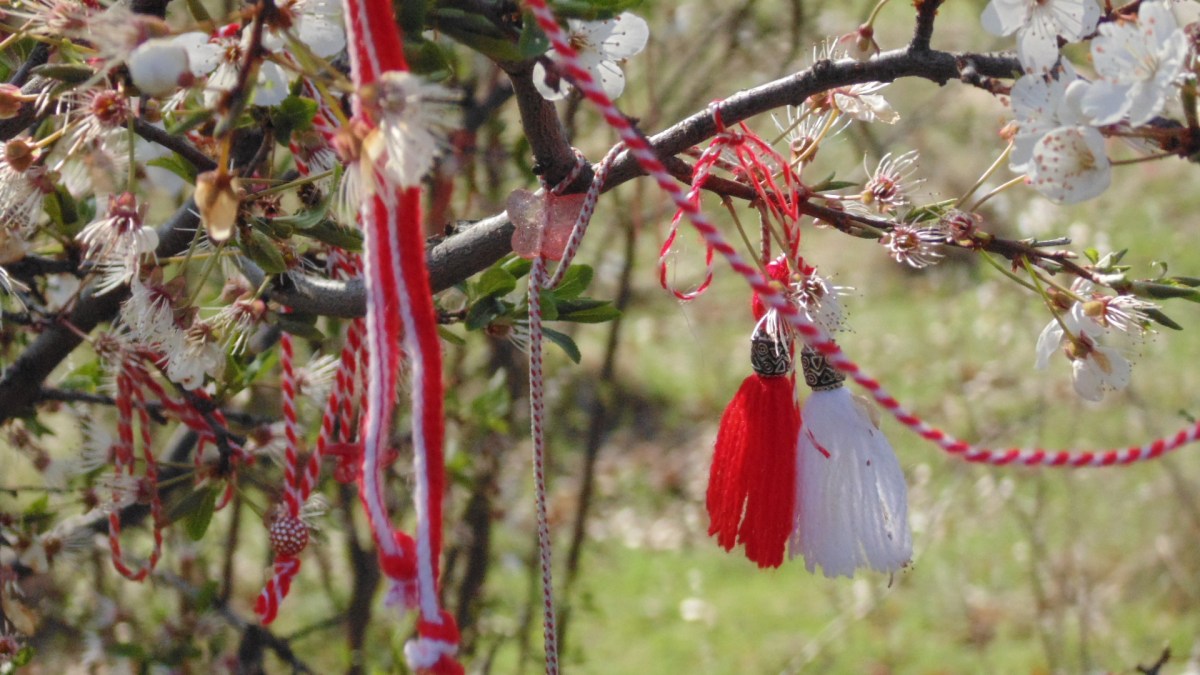Many cultures have Spring related traditions. Growing up I remember everyone saying that March could come in like a lion and go out like a lamb. I drew countless pictures of how March would behave each year. And of course, the “April showers bring May flowers.” Spring in Thailand celebrates the Songkran Water Festival which involves going to a Buddist monastery, visiting elders, and throwing water. In India, they celebrate Holi where Hindus throw colored powder at one another for the many colors of Spring.

One of my recent favorites of Spring traditions is Baba Marta and the Martinitsa which comes out of Bulgaria. A Martenitsa is a small bracelet made of white and red yarn. They typically have little people made of yarn hanging from them or are adorned with beadwork. My wife (who is Bulgarian) describes her childhood where she used to get quite serious about making Martinitsi and I can completely see how it must be fun for children to make their own Martinitsa to hand out to family and loved ones.
Beginning on the first day of March, Martenitsi are given as gifts to loved ones, friends, and those you feel close to. The wearer wears one until they see a stork (although we don’t see them in the U.S., storks are very common in Europe), swallow, or a blossoming tree, and then they remove the Martenitsa.
The tradition is related to ancient pagan history in the Balkan Peninsula. According to Bulgarian folklore, Baba Marta (“Grandma March”) is a grumpy old lady who has rapid mood swings. The belief is that by wearing the red and white colors, people ask Baba Marta for mercy. They hope to make winter pass and bring spring. The coming of the stork, blossom on trees, or a swallow are the harbinger of spring and evidence that Baba Marta is in a good mood and about to retire for the season.
Wearing one or more Martinitsi is popular in Bulgarian tradition and upon removing their Martinitsa, some people tie them on the branch of a fruit tree – thus giving the tree health and luck that the wearer experienced.
Now, this is the tradition that was explained to me by my wife and several close Bulgarian friends. It should be noted that I have also found some (unverified) evidence that the Martinitsa may have roots with the Khazarian tribes attacking the Bulgarians in the 7th century B.C.. A story tells of Bayan who accept Khazarian leadership and stayed with his captive sister. Their other brothers sought out new land for the Bulgarians. There was an agreement that Asparuh (one of the brothers) to send a birth with a golden strand tied to its leg, which would be a signal to escape their captures and follow the brothers. One day the brother and sister saw the bird with the golden strand and escaped. The two reached the lands near the Danube river but had no idea which way to go. To send a sign, Bayan caught the bird and tied a white wool strand on its foot next to the golden one. While tying it, the Khazarian tribe reached them and attacked with arrows. Bayan left a red mark of blood on the white strand. After the Khazarian tribe was defeated, Asparug took the thread of white and red and tied it around the wrists of each of his people, and called it a Martinitsa.
There are similar traditions in North Macedonia (which has similar roots to Bulgaria), Greece, Moldova, Romania, and Albania.
So, this spring, pick up some red and white string and help your children make their own Martinitsa and keep Baba Marta at bay.

